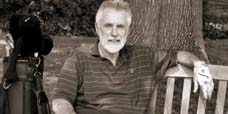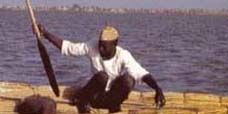2006.06.05: June 5, 2006: Headlines: COS- India: Music: Art: Pianos: Minneapolis-St. Paul Star Tribune: India RPCV Thomas Schrunk can't read music, but the folks who make Steinway grand pianos consider him a virtuoso of veneer
Peace Corps Online:
Directory:
India:
Peace Corps India:
The Peace Corps in India:
2006.06.05: June 5, 2006: Headlines: COS- India: Music: Art: Pianos: Minneapolis-St. Paul Star Tribune: India RPCV Thomas Schrunk can't read music, but the folks who make Steinway grand pianos consider him a virtuoso of veneer
India RPCV Thomas Schrunk can't read music, but the folks who make Steinway grand pianos consider him a virtuoso of veneer

Schrunk has made four art cases for Steinway, but his repertoire includes far more than pianos. He's made tables, chairs, headboards, boats and floors with hundreds of precisely configured pieces that create the illusion of flowing streams. He also makes abstract brushed-aluminum wall art, and he has a patent pending for a type of grooved concrete that catches and reflects light from different angles, changing appearance as the viewer moves past.
India RPCV Thomas Schrunk can't read music, but the folks who make Steinway grand pianos consider him a virtuoso of veneer
A little light music
From Steinway veneers to groovy (literally) concrete and abstract metal art, artist and Renaissance man Thomas Schrunk lives for the play of light on surfaces.
Caption: Thomas Schrunk designs, among other things, metal wall hangings, grooved concrete and wooden veneer for tables and even Steinway pianos. He is presently patenting a technique for grooving concrete. Behind Schrunk is a veneer sampler wall hanging made from a variety of woods, including walnut, mahogany, maple and oak. Photo: Jim Gehrz, Star Tribune
BY Dan Wascoe • dwascoe @startribune.com
Thomas Schrunk can't read music, but the folks who make Steinway grand pianos consider him a virtuoso of veneer.
The 64-year-old St. Anthony artist soon will begin work on his fourth art case piano for the famous keyboard manufacturer. Art case Steinways are stunning applications of visual arts to a musical instrument -- the company makes only three to six per year, and they're pricey.
One of Schrunk's previous models, called Europa, features walnut and matched swirls of Carpathian elm burls combined with such panache that five bidders pursued it when it became available last January. The winning bidder, Greene Music of San Diego, now is asking $249,500 for Europa.
Schrunk has made four art cases for Steinway, but his repertoire includes far more than pianos. He's made tables, chairs, headboards, boats and floors with hundreds of precisely configured pieces that create the illusion of flowing streams. He also makes abstract brushed-aluminum wall art, and he has a patent pending for a type of grooved concrete that catches and reflects light from different angles, changing appearance as the viewer moves past.
"I can put a [concrete] skin on a building and it looks like it's made of silk," he said, "but when a cloud sweeps over the sun, the whole building will be in movement."
Whether the medium is concrete or wood, the common thread running through Schrunk's art is making light interact with a variety of surfaces and textures.
Prelude to a piano
Schrunk's basement workshop includes fiberboard sheets laid atop a little-used pool table. Nearby, dozens of cubbyholes hold small strips of different woods. Using his own graph paper as a kind of road map to plot the flow of the grain, he pieces those strips together. He pays attention to diagonal and vertical lines, which "we see better" than horizontals, he said.
"People say I'm more of an engineer than an artist," he said, "and they may be right."
When he showed his designs, unsolicited, to Steinway, "They saw diagonal bookmatching that had not been done before."
To woodworkers, bookmatching means placing precisely fitted pieces side by side to create either the illusion of seamless continuity or strikingly dramatic mirror-image patterns. He uses "a big paper cutter" to match angles, then massages glue between the strips before securing them with blue masking tape.
He ships his sheets of finished veneer to Steinway's factory in New York City, where burly workers press them around the curves of the grand piano. A single sheet around the rim can be 17 feet long, with enough excess to permit careful trimming.
Andrew Horbachevsky, Steinway's director of design in the factory in Queens, said it takes "a certain kind of person" to master Schrunk's style and craftsmanship -- "detailed, accurate, precise."
In addition, he said, Schrunk's "unpretentious" and "thoughtful" personality strikes a chord at Steinway. "You've got to have a good chemistry," Horbachevsky said. "If not, the end product is not what we want. ... We get very passionate about what we do."
Divertimento
Schrunk was born on Christmas Day 1941, and was raised by his mother, a teacher, and his father, an egg wholesaler, on a small farm near Cedar Rapids, Iowa. He left the University of Iowa after his junior year to join the Peace Corps. That included time in India, where he became interested in the art of refracted light and the multiple repetitions of symbols and designs in Islamic art. These principles would inform his later work.
Returning to Des Moines, he earned a bachelor's degree in general science in 1967 and a master's in art history in 1972. He also took architectural photographs in Yugoslavia, where he met his wife, Vanca. They were married in 1973.
He earned a second master's, in architecture, at the University of Minnesota and soon turned to restoring stained-glass windows in Midwest churches, absorbing the lessons of transmitted light. He also learned to sandblast glue off glass in controlled ways to produce a unique mottled effect. But he disliked inhaling sandblasting dust and turned instead to making wood frames for stained glass and pictures made entirely of veneers.
In 1988, to share time with his then-5-year-old son, he built a small glass-bottom boat. It quickly found a buyer. The following summer father and son built a bigger boat and Schrunk used veneer to cover a joint. "That was the nut, the kernel" of what was to come, he said.
Although his Northern Rhapsody Boatworks was a featured attraction at the Minneapolis Boat Show in 1990, he grew bored with boats and decided to launch, of all things, a political career.
Influenced by his mother's caution that "Silence is consent," Schrunk ran for the U.S. Senate in Minnesota in 1996 as an Independence Party candidate against Democratic incumbent Paul Wellstone and Republican challenger Rudy Boschwitz. Schrunk was fed up with politicians who "pass laws willy-nilly" but don't practice "quality assurance" to see whether they achieve promised benefits.
Although the party's nomination went to Dean Barkley, Schrunk remains proud of one of his campaign buttons: "Honey, we Schrunk the government." But once "realism set in," he decided at age 55 that he wanted to be a full-time artist.
Coda
Before embarking on his next art case piano project, Schrunk is preparing a line of veneered tabletops that other woodworkers will attach to bases. The tables are to go on display at Blue Sky Galleries in northeast Minneapolis this summer.
Schrunk enjoys teaching other craftsmen the skills he's picked up in a lifetime of watching light glitter, stream and dapple and transforming that transience into something more permanent -- "something greater than the sum of its parts."
He doesn't consider such lessons spilling his trove of artistic secrets.
"I'm 64," he said. "It's time for me to share."
Dan Wascoe • 612-673-4436
When this story was posted in June 2006, this was on the front page of PCOL:





Peace Corps Online The Independent News Forum serving Returned Peace Corps Volunteers
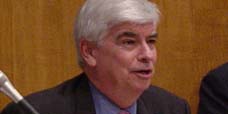 | Chris Dodd considers run for the White House
Senator Chris Dodd plans to spend the next six to eight months raising money and reaching out to Democrats around the country to gauge his viability as a candidate. Just how far Dodd can go depends largely on his ability to reach Democrats looking for an alternative to Hillary Clinton. PCOL Comment: Dodd served as a Volunteer in the Dominican Republic and has been one of the strongest supporters of the Peace Corps in Congress. |
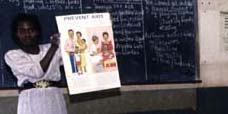 | The Peace Corps Library
The Peace Corps Library is now available online with over 40,000 index entries in 500 categories. Looking for a Returned Volunteer? Check our RPCV Directory. New: Sign up to receive PCOL Magazine, our free Monthly Magazine by email. Like to keep up with Peace Corps news as it happens? Sign up to recieve a daily summary of Peace Corps stories from around the world. |
 | Vasquez testifies before Senate Committee
Director Vasquez testifies before the Senate Foreign Relations Committee on his nomination as the new Representative to the United Nations Agencies for Food and Agriculture replacing Tony Hall. He has been the third longest serving Peace Corps Director after Loret Ruppe Miller and Sargent Shriver. PCOL Comment: Read our thanks to Director Vasquez for his service to the Peace Corps. |
 | PC evacuates East Timor, hopes to return
Volunteers serving in East Timor have safely left the country as a result of the recent civil unrest and government instability. Latest: The Peace Corps has informed us that they are monitoring the security situation on a daily basis and that it is the intention of the Peace Corps to return to East Timor if the security situation improves. |
 | Interview with a Hit Man
RPCV John Perkins says that for many years he was an "economic hit man" in the world of international finance whose primary job was to convince less developed countries to accept multibillion dollar loans for infrastructure projects that left the recipient countries wallowing in debt and highly vulnerable to outside political and commercial interests. In this exclusive interview for "Peace Corps Online," Colombia RPCV Joanne Roll, author of Remember with Honor, talks to Perkins about his Peace Corps service, his relation with the NSA, "colonization" in Ecuador, the consequences of his work, why he decided to speak out, and what his hopes are for change. |
 | Peace Corps stonewalls on FOIA request
The Ashland Daily Tidings reports that Peace Corps has blocked their request for information on the Volkart case. "After the Tidings requested information pertaining to why Volkart was denied the position — on March 2 — the newspaper received a letter from the Peace Corps FOIA officer stating the requested information was protected under an exemption of the act." The Dayton Daily News had similar problems with FOIA requests for their award winning series on Volunteer Safety and Security. |
 | PCOL readership increases 100%
Monthly readership on "Peace Corps Online" has increased in the past twelve months to 350,000 visitors - over eleven thousand every day - a 100% increase since this time last year. Thanks again, RPCVs and Friends of the Peace Corps, for making PCOL your source of information for the Peace Corps community. And thanks for supporting the Peace Corps Library and History of the Peace Corps. Stay tuned, the best is yet to come. |
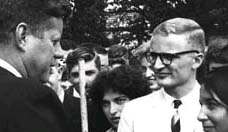 | History of the Peace Corps
PCOL is proud to announce that Phase One of the "History of the Peace Corps" is now available online. This installment includes over 5,000 pages of primary source documents from the archives of the Peace Corps including every issue of "Peace Corps News," "Peace Corps Times," "Peace Corps Volunteer," "Action Update," and every annual report of the Peace Corps to Congress since 1961. "Ask Not" is an ongoing project. Read how you can help. |
 | PC announces new program in Cambodia
Director Vasquez and Cambodia's Deputy Chief of Mission Meng Eang Nay announced a historic new partnership between the Peace Corps and the Kingdom of Cambodia that will bring volunteers to this Southeast Asian country for the first time. Under King Norodom Sihamoni and Prime Minister Hun Sen, Cambodia has welcomed new partnerships with the U.S. government and other U.S. organizations. |
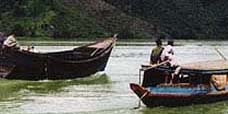 | Peace Corps suspends program in Bangladesh
Peace Corps Director Gaddi H. Vasquez announced the suspension of the Peace Corps program in Bangladesh on March 15. The safety and security of volunteers is the number one priority of the Peace Corps. Therefore, all Peace Corps volunteers serving in Bangladesh have safely left the country. More than 280 Peace Corps volunteers have served in Bangladesh since the program opened in November 1998. Latest: What other newspapers say. |
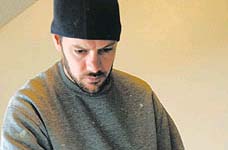 | Invitee re-assigned after inflammatory remarks
The Peace Corps has pulled the invitation to Derek Volkart to join the Morocco Training Program and offered him a position in the Pacific instead after officials read an article in which he stated that his decision to join the Peace Corps was in "response to our current fascist government." RPCV Lew Nash says that "If Derek Volkart spoke his mind as freely in Morocco about the Moroccan monarchy it could cause major problems for himself and other Peace Corps volunteers." Latest: Volkart reverses stance, takes new assignment in Paraguay. |
 | RPCV admits to abuse while in Peace Corps
Timothy Ronald Obert has pleaded guilty to sexually abusing a minor in Costa Rica while serving there as a Peace Corps volunteer. "The Peace Corps has a zero tolerance policy for misconduct that violates the law or standards of conduct established by the Peace Corps," said Peace Corps Director Gaddi H. Vasquez. Could inadequate screening have been partly to blame? Mr. Obert's resume, which he had submitted to the Peace Corps in support of his application to become a Peace Corps Volunteer, showed that he had repeatedly sought and obtained positions working with underprivileged children. Read what RPCVs have to say about this case. |
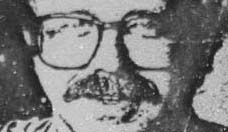 | Why blurring the lines puts PCVs in danger
When the National Call to Service legislation was amended to include Peace Corps in December of 2002, this country had not yet invaded Iraq and was not in prolonged military engagement in the Middle East, as it is now. Read the story of how one volunteer spent three years in captivity from 1976 to 1980 as the hostage of a insurrection group in Colombia in Joanne Marie Roll's op-ed on why this legislation may put soldier/PCVs in the same kind of danger. Latest: Read the ongoing dialog on the subject. |
Read the stories and leave your comments.

Some postings on Peace Corps Online are provided to the individual members of this group without permission of the copyright owner for the non-profit purposes of criticism, comment, education, scholarship, and research under the "Fair Use" provisions of U.S. Government copyright laws and they may not be distributed further without permission of the copyright owner. Peace Corps Online does not vouch for the accuracy of the content of the postings, which is the sole responsibility of the copyright holder.
Story Source: Minneapolis-St. Paul Star Tribune
This story has been posted in the following forums: : Headlines; COS- India; Music; Art; Pianos
PCOL33057
83


